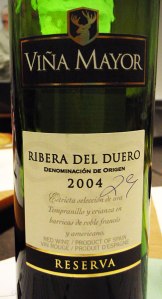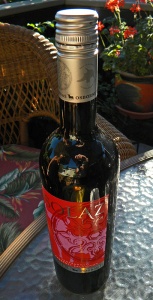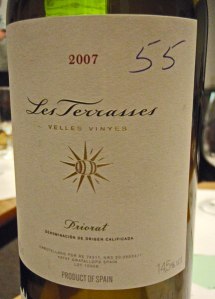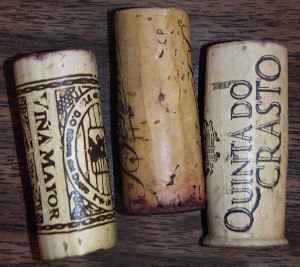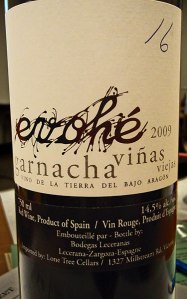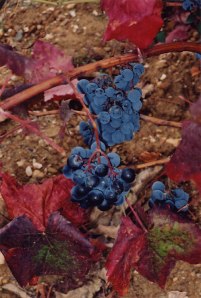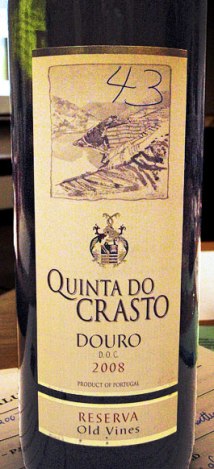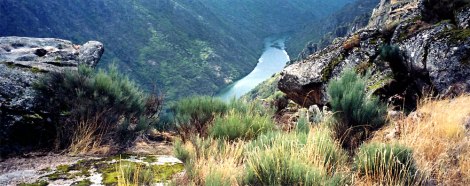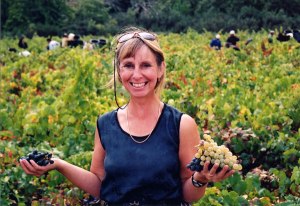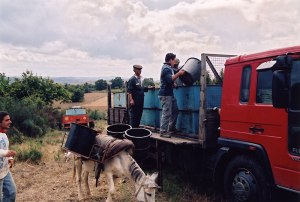According to the instructor of my wine-tasting class, Spain is the second largest wine producer in the world when it comes to reds, and Portugal is ramping up production of quality reds from the Duoro and Alentejo regions. So here’s the vino tintos from the class, plus my sangria experience and photos from the wine region of Portugal!
- Tempranillo, with its strawberry and raspberry aromas, is the signature grape of Spain. Beronia Rioja, made of these grapes from the famous Rioja region of Spain, tasted of red fruit and sweet cloves, $24.
- Viña Mayor, another wine of 100% Tempranillo grapes, comes from a different major wine region in Spain, the Ribera del Duero, $29. It had a darker, richer character, with less oak than the previously tasted Beronia Rioja.
- Both of these wines would be excellent for Sangria, the Spanish version of a wine spritzer. Patricia and I made a video on how to make Sangria for our Spanish course, and used Solaz, a blend of Tempranillo grapes and Cabernet Sauvignon. I liked it because it was considerably cheaper and had a real Spanish-looking label.
- Here is the blog in Spanish and English: How to Make Sangria. The video, in Spanish only, is at: https://www.youtube.com/watch?v=BLQHXQ_4kCQ . This is a great way to practice your Spanish (and drinking) if you happen to be going on a trip through Spain…
- Les Terrasses, ‘velles vinyes’ which means ‘old vines’ in the dialect of the region. Spain has many vinyards producing wines from viñas viejas (old vines), a detail you will often see on the labels. These vines are 75-100 years old, and although they produce less fruit than those from 14-20 year old vines, the grapes are richer and tastier. Les Terrasses, from the Priorat region of Spain, was the ‘wow’ wine of the evening, $55. It is a blend of Garnacha (Grenache) and Carinena grapes, elegant… complex… Trust me to like the most expensive wine of the evening!
- our instructor had us examine the corks to observe that the $55 bottle of wine used a higher quality cork than the cheaper bottles.
- cork trees in Portugal, just stripped of their bark. We were there in 2001, and the ‘1’ on the tree indicates that the cork had just been removed that year. Usually they wait 7-9 years before stripping the cork tree again.
- another view of the cork trees
- Evohé Garnacha, was the fourth Spanish red we tasted, also made from Granacha grapes. Done in ‘modern style’ from the more flavourful grapes that grow on the older vines (viñas viejas), it was not as complex as the first ‘garnacha’ (Les Terrasses), but at $16 it was damn good, bursting with black cherry and blackberry flavours! I see that it garnered 90 points from international wine reviewers, an real honour in that price range.
- the Altos de la Hoya, also from Spain, featured Monastrell grapes, altogether different from the previous wines, tasting of ‘smoked meat and licorice’, $17. Not really sure if I liked this one…
- Dao, made from Touriga Nacional, the primary grape of Portugal, had a ‘firm character’ and lots of tannin. This wine really shines when served with food.
- Quinta do Crasto, our other Portuguese red, came from the Douro Valley. It was described as ‘generous’, and a ‘big rich wine in the mouth’, $43.
- The Douro Valley was stunningly beautiful, and well worth visiting even if you don’t drink wine (and even better if you do!)
- We were in northern Portugal during grape-picking time. It was mostly older people picking the grapes as the majority of young people had left these small villages.
- Here I was trying to take photos of the grape harvest but they kept handing me grapes until I could no longer hold on to my camera – I think that was the plan!
- The pickers piled the grapes into barrels that were carried by donkeys. The donkeys were perfect for going up and down the rows too narrow for a tractor.
And now for the next set of tastings, the ports and sherries of Spain and Portugal!
Check out my previous post on Cavas and the White Wines from Spain and Portugal


